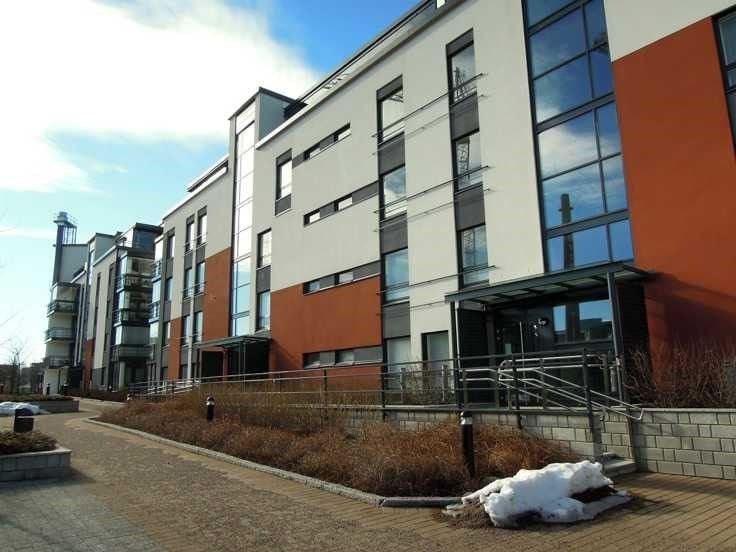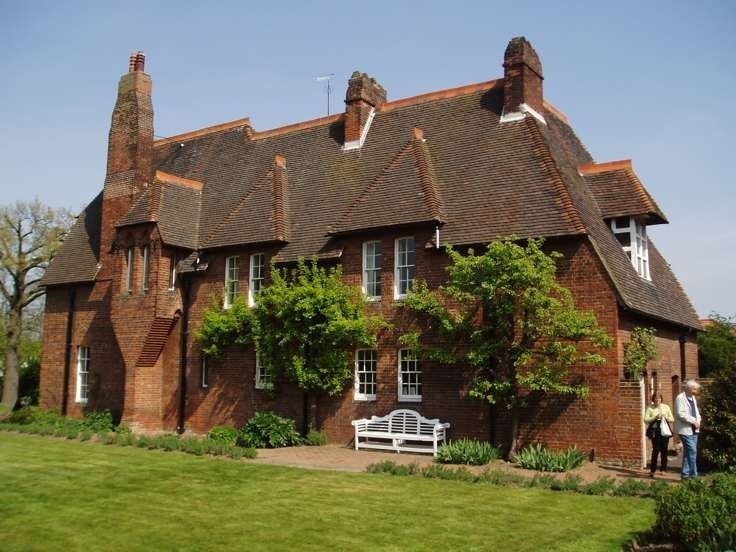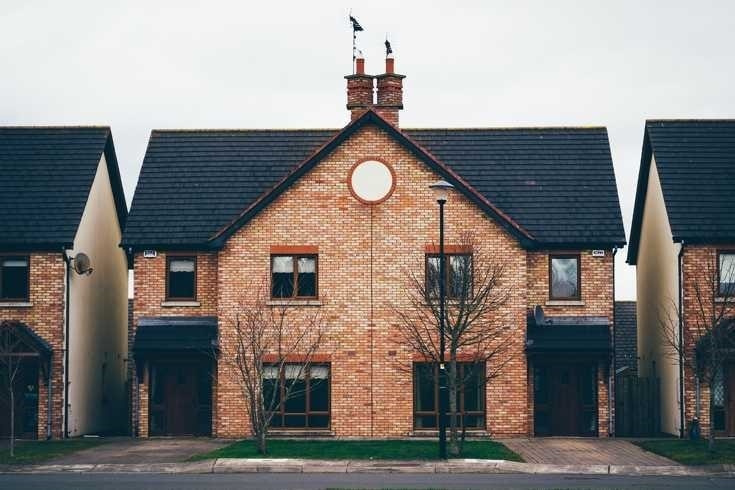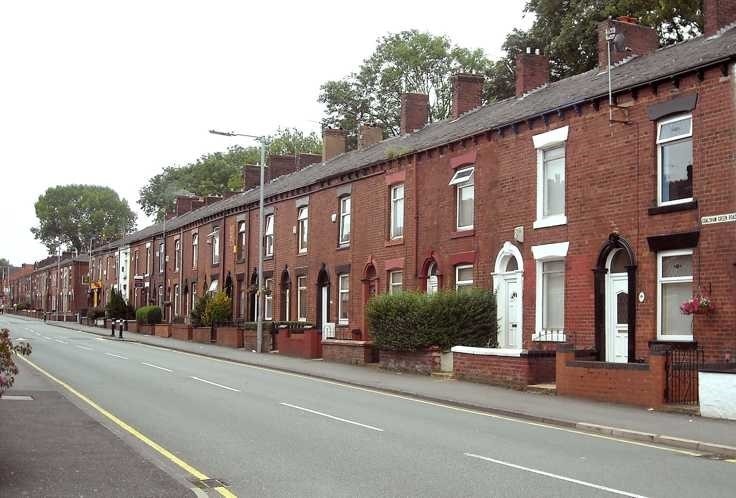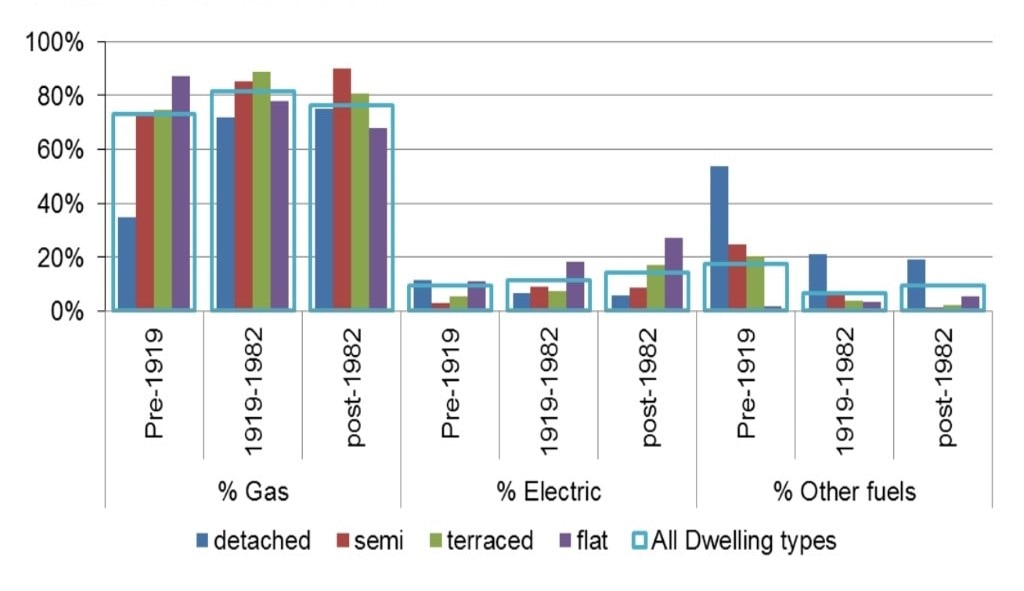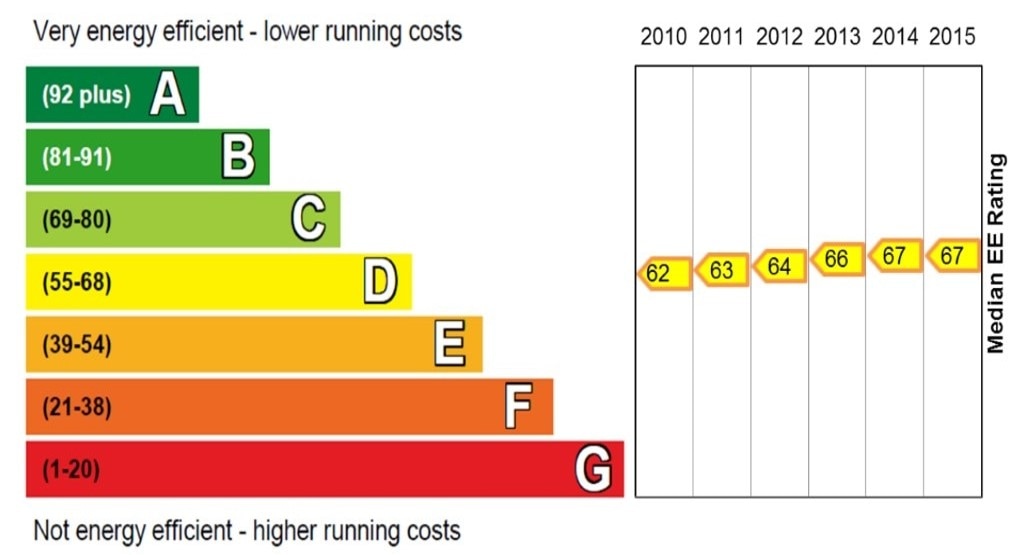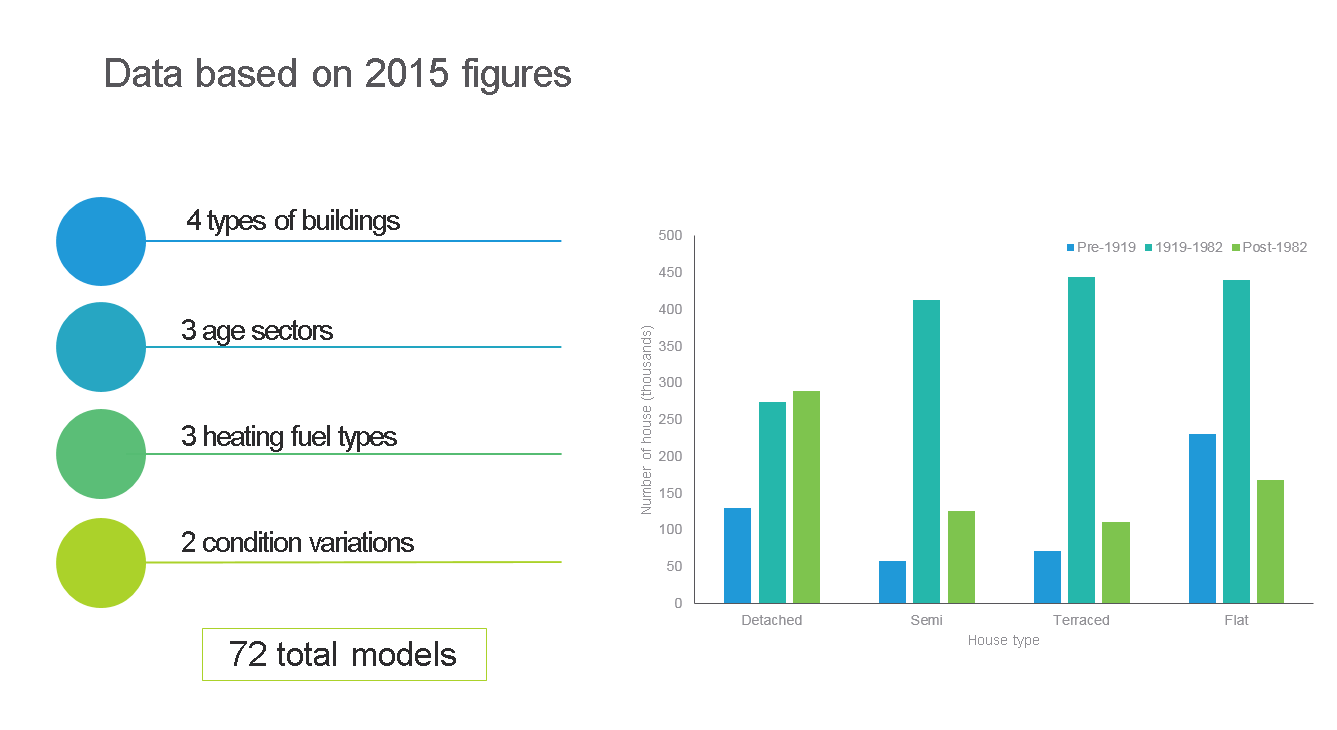Scotland's Housing Stock
We used the 2015 Scottish Housing Condition Survey (SHCS) to gather data about dwelling types, ages, heating systems, sizes, and U-values for the existing building stock of Scotland. This page is a summary of the information we collected in the process of this research.
Building Types
The SHCS defines 4 types of property that exist within the Scottish residential housing stock.
|
Flats
A flat is a living area that is self-contained and in one part of a building. A building is usually split into individual flats and the communal areas are those that are shared e.g. lifts, stairwells, receptions etc. Flats include maisonettes, 2-storey flats and tenements. Flats make up the highest proportion of buildings in Scotland. |
Age of Building
Three age sectors were defined in the SHCS: pre-1919, 1919-1982 and post-1982. Each age sector is characterised by different architectural features, wall types, insulation levels and other factors.
Building Condition
For our housing stock model, we based our base models on 2 condition variations per building: "as-built" and "improved". These were based on the EU Energy Performance Buildings Directive (EPBD) and Energy Performance Certificates (EPC) data. EPCs were introduced in January 2009 under the requirements of the EPBD. They provide environmental impact and energy efficiency ratings based on a standard calculation method known as Standard Assessment Procedure (SAP). SAP is a UK Government-approved method of assessing building performance. The SAP assessment mainly consists of:
- energy demand for space heating
- energy demand for water heating
- ventilation
- lighting control systems
- renewables generation
|
Energy Efficiency Rating
The Energy Efficiency Rating (EER) is expressed on a scale of 1-100 where a rating of 1 is the lowest performing in terms of energy efficiency and will result in high fuel bills, and 100 demonstrates very high energy efficiency. If the house is generating more energy than it uses, the rating may exceed 100. The EER in EPCs are presented over 7 bands, labeled A to G, for a given built form and specific floor area. Band A is the most efficient and Band G is the poorest performing. For our project's housing stock model based on EPCs and EER, two condition variations per building were introduced. |
The percentage of the housing stock that was improved was based on data gathered from the SHCS. It was assumed that buildings with an EPC band above F were retrofitted. This data was primarily based around the age of the building, however also took into account the building improvements we have specified here.
